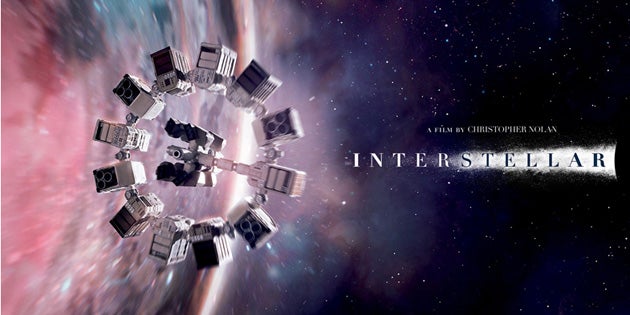College of Charleston astronomy and astrophysics professor Jon Hakkila says Interstellar, Christopher Nolan’s new movie, has flashes of brilliance and some of the best discussions of general relativity presented onscreen to date.
Interstellar, starring Matthew McConaughey, Anne Hathaway, Jessica Chastain and Michael Caine, opened across the U.S. on November 7, 2014.
Hakkila, part of the scientific team that just discovered the largest structure in the universe, provides his expert opinion of the movie.
ARTICLE: Read about Hakkila’s discovery in “Starstruck” in College of Charleston Magazine.
Hakkila’s 30-second version: It is an interesting but uneven mix of science fiction, action and drama. My inner geek was highly satisfied with the spectacular presentation of general relativity concepts, particularly that of time dilation. It has some spectacular photography and special effects, but it plods in places and the science is generally good but conveniently unbelievable when it needs to be.
About Interstellar
The movie takes place on a post-apocalyptic, environmentally devastated North America. Cooper (McConaughey) is a former test pilot who has turned to farming because climate change has caused this to become the most critically important vocation needed for mankind’s survival. Cooper lives with his father-in-law, son and daughter Murph (Mackenzie Foy as young Murph, Jessica Chastain as an older Murph and Ellen Burstyn as an even older Murph).
ARTICLE: Here’s a guide from Business Insider on understanding Interstellar’s plot and timeline.
Cooper and Murph receive mysterious signals in Murph’s farmhouse bedroom from an unknown (alien?) source that sends them to the secret location of NASA, which has gone underground. After getting a good tasering from NASA security, Cooper is introduced to Professor Brand (Caine) and his daughter Amelia (Hathaway), who share with him NASA’s plan for saving humanity. The plan involves flying the NASA ship Endurance through a wormhole discovered near Saturn and exploring three worlds on the other side that orbit close to a black hole.
Any one of these planets might serve as a future home for humans, who could be transplanted from Earth (if Brand can solve some important gravitational equations) or raised from frozen embryos (if he fails). In fact, several NASA astronauts have already gone to explore these planets, but they have been incommunicado for years and were apparently the last astronauts NASA had.
Lucky for them, that discredited test pilot Cooper has come along! With extreme objections from Murph, Cooper throws his hat in with NASA (surprise! And he flies Endurance with no training!), and leaves on an extended exploration. Before he leaves, Cooper vows that he will return for Murph, even though it is apparent that the trip will take many years and that relativistic effects may cause him to age more slowly than her.
The movie follows the action both on Earth (as Brand and Murph try to solve the mysterious gravitational equations) and on the Endurance (as the astronauts try to determine which of the three planets can support a transplanted humanity).
Behind the Science
My inner geek was highly satisfied with the spectacular presentation of general relativity concepts, particularly that of time dilation. But how could any movie with astrophysicist Kip Thorne as executive producer do otherwise? Thorne wrote the book on gravitation. And visual effects supervisor Paul Franklin and his team did an eerie job of creating imaginative and believable three-dimensional interpretations of multi-dimensional scenery (in particular, the view of the wormhole near Saturn, the slowly-moving tidal waves on the first planet and the “backside” of the library in Cooper’s farmhouse), as well as dust storm–ravaged Earth.
ARTICLE: Space.com looks at the science behind Interstellar.
On the other hand, the presentations of NASA (even the watered-down version of the agency presented here), spaceflight and the way that science is done are entirely unrealistic and unbelievable. For example, describing orbital mechanics as, “Let’s go around this way rather than that way” seems like a poor man’s version of mission planning. Furthermore, the way by which tidal stretching forces occur as Cooper approaches the black hole has been surreptitiously ignored, probably because treating it correctly would end the movie in a shorter, squishier and more abrupt fashion.
The acting, like the rest of the movie, has flashes of brilliance. There are beautiful moments when the lead characters are forced to face each other after aging in different timestreams, and this creates much of the movie’s dramatic tension. Foy, Chastain, Hathaway, Caine and Matt Damon (as the overwrought astronaut Mann) are very believable in their roles. However, McConaughey seems to have been miscast; for some reason his portrayal of Cooper just doesn’t feel right. The same seems true for Lithgow, who would fit better on the 3rd Rock from the Sun than on Earth.
Overall, Interstellar is an enjoyable movie, and the moments of brilliance make it well worth watching. It is awfully nice that this science fiction movie works so hard to get the science right: The movie industry often does the public a disservice when it tries to make up science, or when it punts by making science look like magic. Nolan and his team demonstrate here that the movie technology now exists to reproduce the science correctly, if one is just willing to take a little time to get it right. Perhaps the movie runs a little too long, but maybe it just seems that way to me based on my relativistic timestream. I think I’ll just watch it faster next time.






